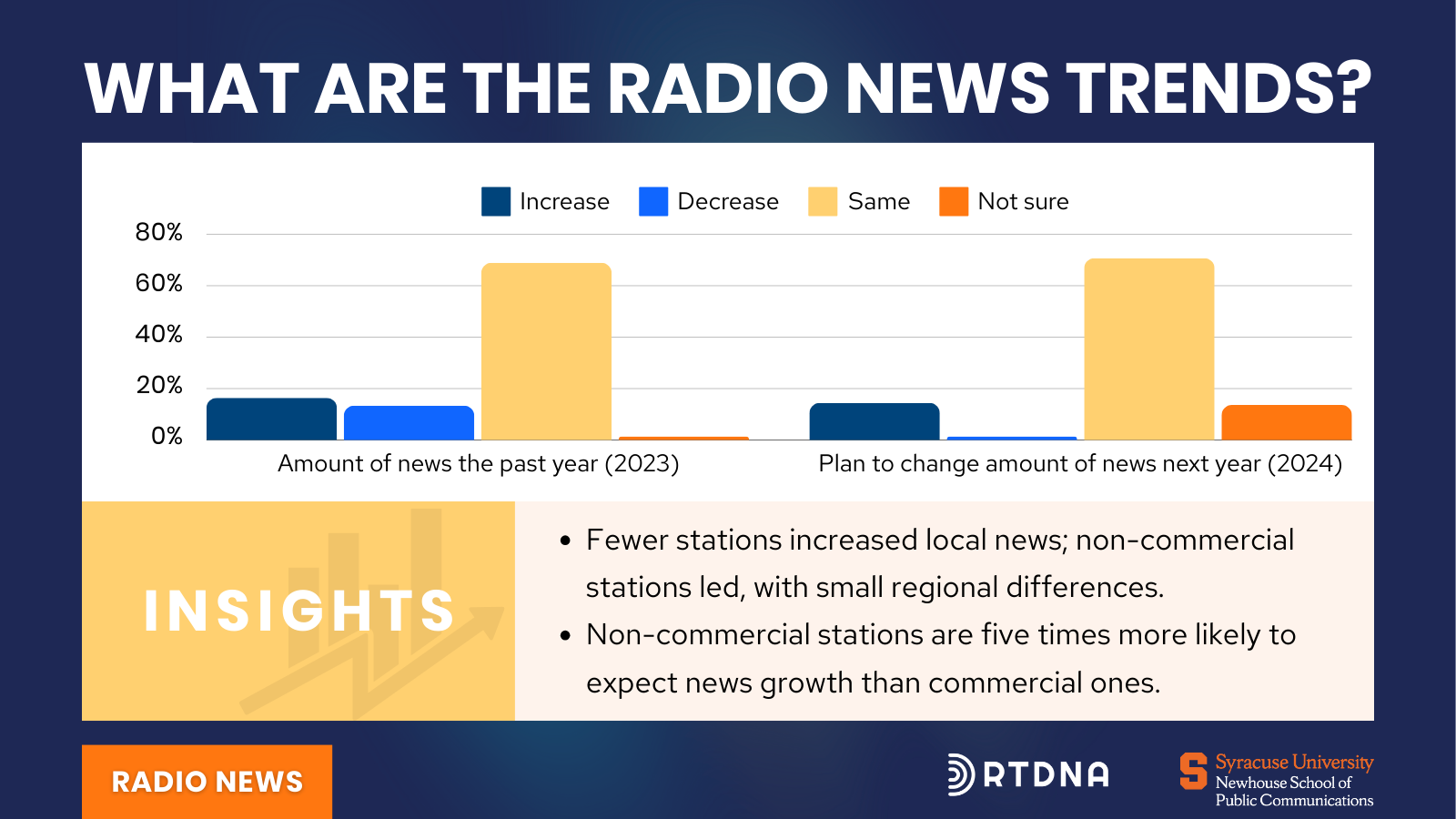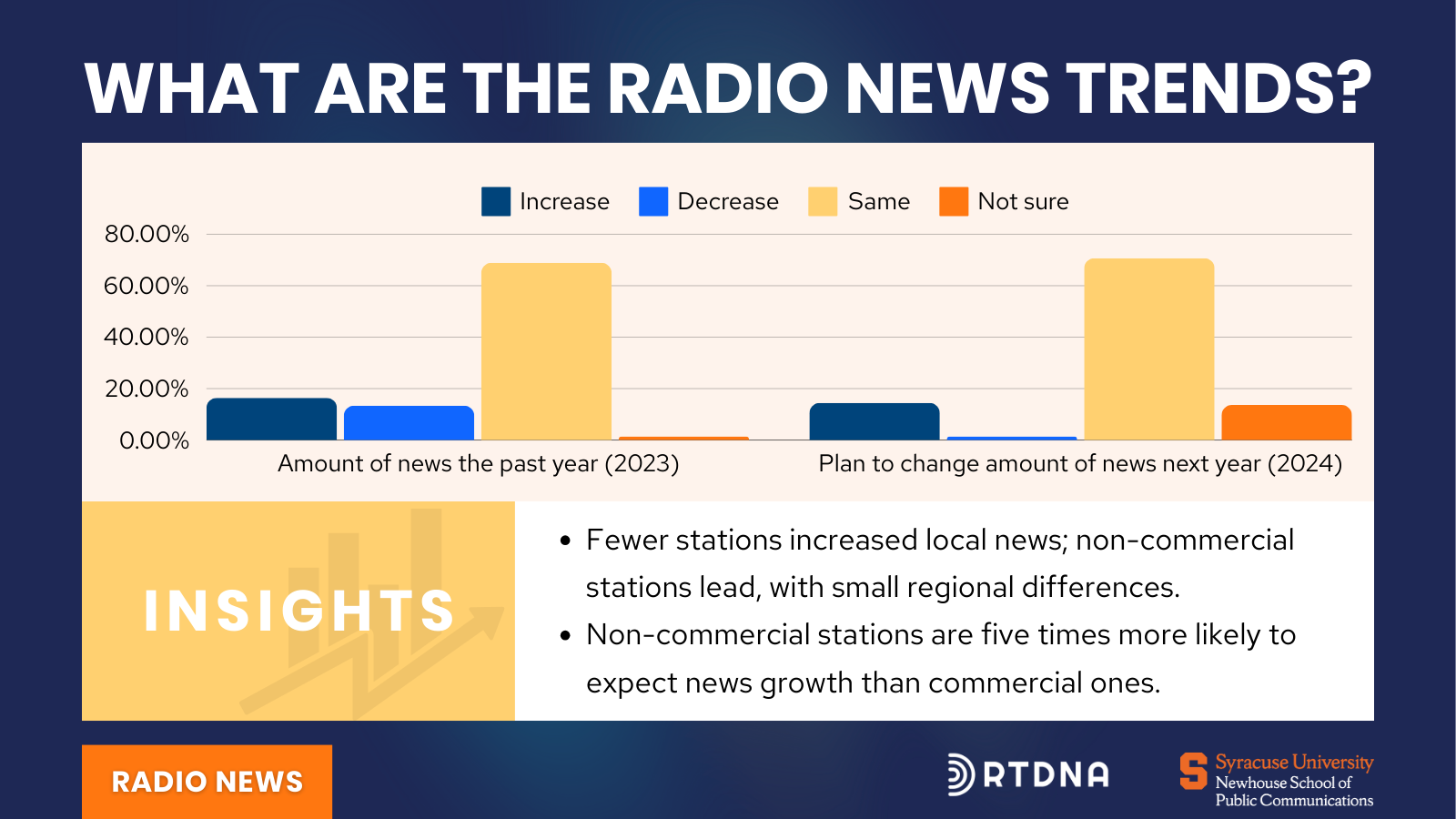Fewer radio stations run less local news

By Bob Papper and Keren Henderson
July 8, 2024 — The latest RTDNA/Newhouse School at Syracuse University Survey found that, overall, 64.2% of all radio stations in the Survey report running local news: 66.5% of AM stations and 63.3% of FM stations. Those numbers are all down from last year — down 4 points overall from a year ago. FM stations dropped 3 points, but AM stations fell by almost 7.
Overall, 65% of commercial stations run local news in this year’s Survey. That’s nearly identical to last year’s 66.2%. A year ago, we saw a 10-point drop in non-commercial stations running local news. This year, the percentage of non-commercial stations running local news fell another 2 points — down to 60.7%. We don’t know why there’s been a drop in local news at non-commercial stations. This year’s numbers back up the idea that last year’s drop was neither a fluke nor a survey anomaly.
There’s a common perception that locally owned radio stations are more likely to produce local news than stations that are not locally owned. But that’s never been the case every time we’ve looked at the issue — until this year. Overall, 75.3% of locally owned station groups run local news, and 71.5% of non-locally owned station groups run local news. The percentage of locally owned groups running local news is virtually unchanged from last year, but non-locally owned station groups fell 12 points from a year ago.
If we look at individual stations, the difference is even sharper. Overall, 68.4% of locally owned stations run local news versus 54.1% of non-locally owned stations.

Overall, the typical (median) amount of weekday local news dropped by 8 minutes. Last year, minutes increased by 3 per weekday. The average fell by over 20 — back to just about where it was two years ago. The biggest drop in average minutes came in large markets, suggesting that fewer all news or news/talk stations there filled out the Survey this year. Medium markets are down a bit; small markets dropped an average of over 20 minutes per weekday.
Commercial station minutes decreased on average, while non-commercial stations saw an increase in average minutes but a slight drop in median minutes.
Meanwhile, average minutes decreased across the board on the weekends, with the typical station not running local news at all on the weekend — except 5 minutes on Saturdays in small markets.

About the Authors
Bob Papper is Research Professor of Broadcast and Digital Journalism at Syracuse University and has worked extensively in radio and TV news.
Keren Henderson is Associate Professor of Broadcast and Digital Journalism at Syracuse University.
This research was supported by the S. I. Newhouse School of Public Communications at Syracuse University and the Radio Television Digital News Association.
About the Survey
The RTDNA/Newhouse School at Syracuse University Survey was conducted in the fourth quarter of 2023 among all 1,876 operating, non-satellite television stations and a random sample of 4,764 radio stations. The television response rate is different for every question, but Valid responses came from as many as 1,387 television stations (73.9%) and 631 radio news directors and general managers representing 1,902 radio stations. Some data sets (e.g. the number of TV stations originating local news, getting news from others and women TV news directors) are based on a complete census and are not projected from a smaller sample.
